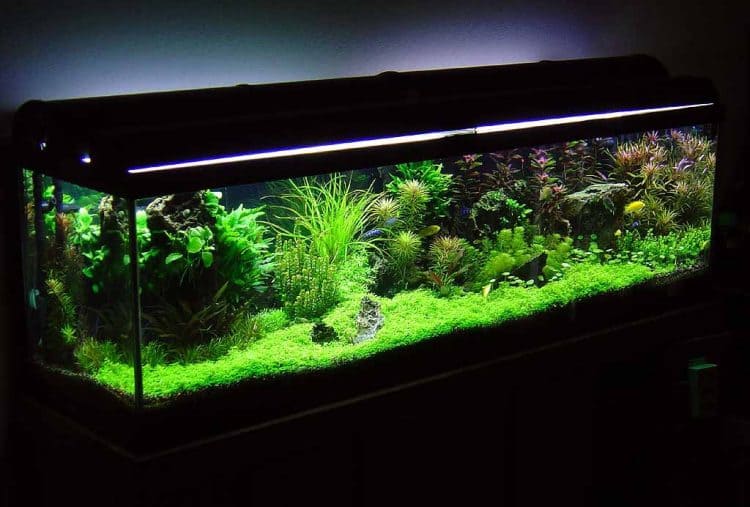Many times people are faced with a situation where they need to completely sterilize their bettas living environment. Some reasons could be a recent outbreak in fungus or a parasite like velvet, but sometimes a person might have recently lost a betta and is wanting to prepare the old bowl for a new betta.
Whatever the reason is, proper sterilization of the bowl/tank and the decorations is needed.
I personally do not believe in using chemicals like bleach in sterilizing a betta home. With many different types of tanks and bowls and materials and sealants, I could never convince myself that I had gotten all traces of the chemical out of the tank and would, in the end, throw it away for fear of needlessly killing a fish. What we recommend is good ole hot water.
To clean the bowl:
If you have a dishwasher with a heat dry cycle–you are the lucky ones! With a dishwasher, just run the tank/bowl through 2-3 times with no soap. The heat dry cycle will kill everything and a good rinse will help remove the residue from it. Then again is a *just make sure* round and the third run is for extra measure.
It was brought to my attention by Healthy Betta member Carol that many dishwashers use JetDry in the dishwasher-do not use your dishwasher if you have this fluid in your dishwasher.
If you do not have a dishwasher, you will want to use boiling water to clean the tank. If it is glass-be careful! Cold tanks and hot water do not mix well at all! You will want to add the boiling water, BUT only to a glass tank that has had hot tap water in it. Repeat the adding of boiling water multiple times.
As an extra added measure of safety, with any bowl you are pouring hot water into, set it in the sink or tub if it is a larger size tank. Should the tank/bowl crack or bust, then you are protected from the water.
If you are doing it “the old fashioned way” make sure you have a spot your betta can live in as well–in case it should crack/break.
Cleaning the gravel:
The gravel can easily be put into a large pan of water and boiled. If you are using painted or dyed rock cover, you will not have this option as many of these rocks have a protective sealant around them to prevent the paint/dyes to get to the fish. Boiling water will remove that sealant.
If you are using painted or dyed rocks, your best bet is to throw them away and buy new.
If you have glass marbles/beads as a ground cover, you cannot boil them either. Some might crack open. You can boil them, but before using them, be sure to pick out all the broken marbles.
Cleaning the hidey holes:
Get a toothbrush and a tub of hot tap water with aquarium salt added. You can easily clean the hidey hole with the toothbrush and water.
Cleaning the plants:
The plants are the hard part. You can use the toothbrush and aquarium salt combination above but you are not guaranteed to get all the bad out. After a scrub, you might let them soak in aquarium salt and hot water.
For me, I just throw all the plants away and get new. I would rather eliminate any chance of re-infecting a betta with an illness than save that extra 4 dollars.
Another Healthy Betta member, Miranda, suggested something she uses as well: a hand held steamer. She says you can clean/sterilize everything with this little contraption and is sure Eureka makes one. The manufacturers advertise that you can use them on faucets, sinks, ovens, bath tubs, dishes if you want, and much more. Miranda got one originally to use on her bird and little critter cages since chemicals should not be used on those either.
In summary, many of us must sterilize. Sterilization is not necessary if you are doing a regular water change. But if you are faced with this as a need to do, hopefully this article gives you some direction.

Leave a Reply